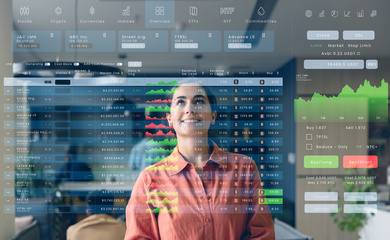IDB World: Inflation, Back to School After the Pandemic, Digitized Transportation

Inflation in Latin America needs to be kept in perspective
The increase in the price of food, fuel, and other essential products is taking a toll on the entire population of Latin America and the Caribbean (LAC) and is especially hard on poorer families already affected by the pandemic. Inflation in the region may be looming yet again and troubling policymakers, but it’s important that these unfolding events be kept in perspective.
Inflation is far from being merely a regional phenomenon. Many countries worldwide, including those with highly developed economies, are dealing with the strains of inflation (graph 1A). Global factors are at play. A stronger post-pandemic recovery than expected in 2021, persistent bottlenecks in production supply chains, and the effects of sweeping fiscal and monetary policies all play important roles. The sharp rise in raw material prices, due in part to the war in Ukraine, has given inflation a significant boost in 2022. These factors suggest that rising inflation in many Latin American countries is not an isolated case.
There’s no need to reach far into the past to see similar inflation rates in LAC. If we look at the post-2005 period, we can see that most countries in the region have experienced inflation rates equal to or greater than the most recent numbers (graph 2). At the time, inflation revolved around the financial crisis of 2007-2008, though there are several exceptions, including Brazil, Colombia, and Uruguay in 2016, whose annual inflation rates hovered around 10%. Most of those episodes were temporary, in keeping with the fact that inflation projections—both medium and long term—haven’t increased much recently.
Returning to school after COVID-19: Why not go back to the future?
In our first post we talked about the past and present of the education system in Latin America, and we remembered how despite attempts to improve education, and despite having achieved (albeit with great difficulty) some improvement in coverage, education in the region was still facing enormous challenges, specifically in terms of quality and equality. And then... the pandemic happened. A rain of problems at the very worst time, adding to an already highly unfavorable situation. In this post, we’ll talk about the future. About how to take that inopportune rain and use it to set the roots of a new form of education that, this time, will help us grow straight into the future.
Like any crisis, this is one that —along with its risks—comes with a great opportunity. Not just to gain back educational losses, but to take a giant, long-awaited leap forward. During these nearly three years, the pandemic has forced everyone —from students and their parents to the educational authorities and (most of all) the teachers —to lay hands on countless educational resources that already existed but weren’t being taken advantage of to any significant degree.
And so, obligated by the pandemic, these countries are learning to use tools that weren’t only useful during the crisis, but will be useful in the future as well. As the pandemic subsides, these instruments should be used daily as part of a new educational practice.
Has the digital transformation of the Latin American transportation industry made progress?
After the crisis created by the COVID-19 pandemic, the Latin American and Caribbean region (LAC) is dealing with widening development gaps and inequality. The transportation sector is the key to accelerating economic recovery because it fills the essential role of providing access to markets and creating educational, health, and work opportunities.
The industry faces a number of challenges, including high levels of urban congestion and its resulting contamination, the financial crisis enveloping public transportation, and high logistic costs. In facing these challenges, digitalization offers solutions. Among other benefits, it can:
- Increase supply chain resilience against future disruptions
- Improve efficiency and coordination between stakeholders
- Improve service quality
- Reduce greenhouse gas emissions
- Diversify sources of income through the creation of new services
LIKE WHAT YOU JUST READ?
Subscribe to our mailing list to stay informed on the latest IDB Invest news, blog posts, upcoming events, and to learn more about specific areas of interest.
Subscribe



